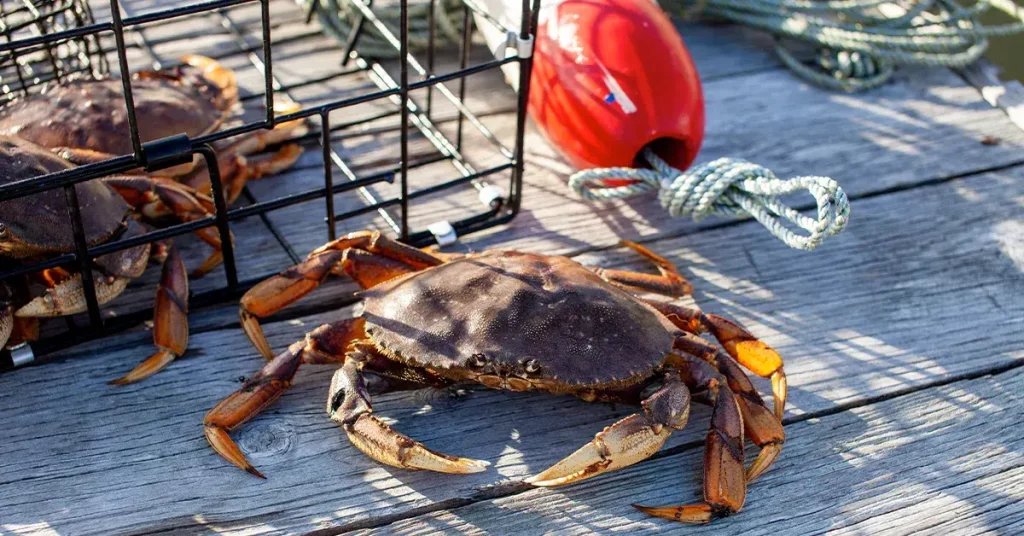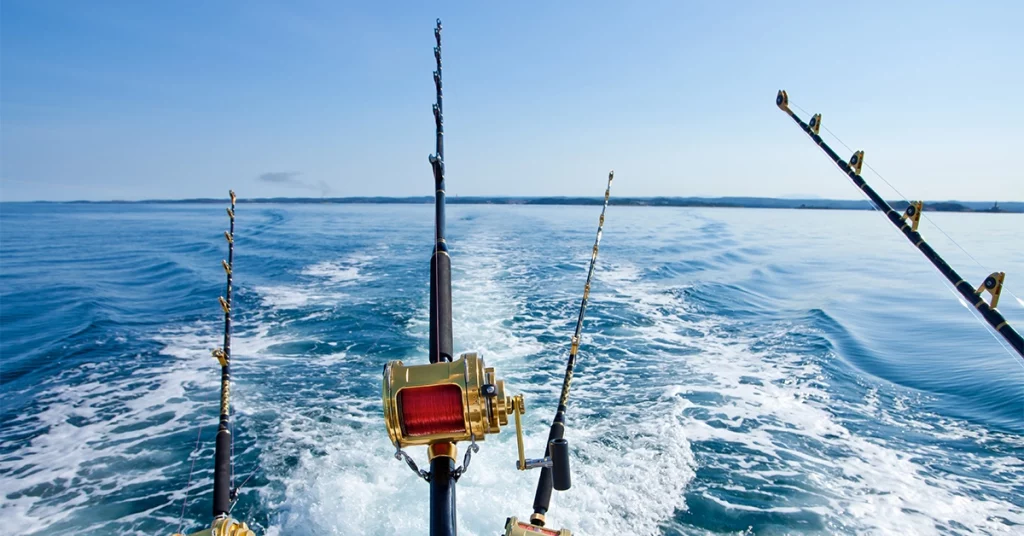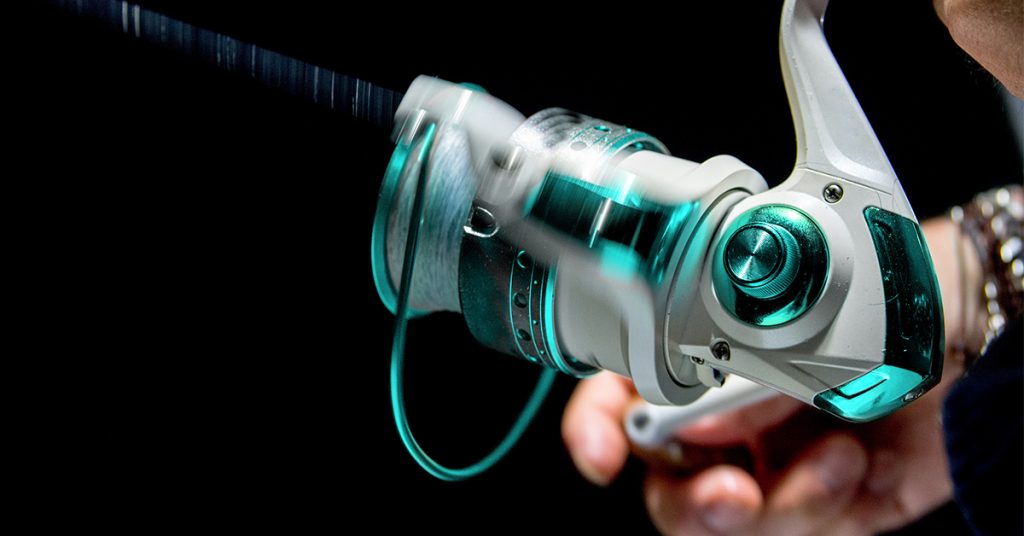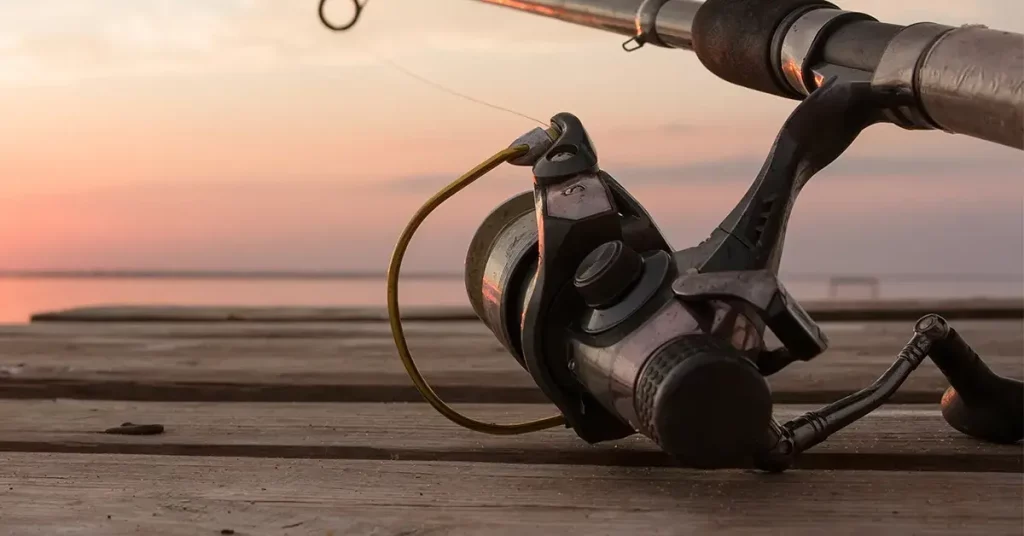There is something magical about catching crabs. Dropping a trap in the salty ocean – then pulling it up with bated breath – in the hopes of scoring a pot full of delicious crustaceans is an addicting pursuit. If you’re looking to catch crabs, making sure you have the best crab traps for the job will take your game to the next level.
While there are a number of ways to harvest delicious crab, including freediving, fishing with snares, and trotlines – the most common and effective way is by using a crab trap (commonly called a pot).
Whether you’re after Dungeness, Red Rock Crab, or Blue Crab you’ll want to make sure your trap is suited to the species you’re targeting. There’s nothing worse than pulling up an empty pot and finding your bait gone– because the crabs were able to squeeze through the holes in your trap!
In this post, I’ll break down the different types of traps, how to use them effectively and review some of the best crab traps available.
Quick Answer: 5 Best Crab Traps
- Best Overall: Promar TR-530 Heavy Duty Crab Pot
- Best Collapsible/Folding Trap: Danielson Pacific FTC Crab Trap
- Best Ring Trap: Promar 32-Inch Lobster and Crab Net
- Best Slip Ring Trap: Protoco Slip Ring
- Budget Pick: Promar Steel Wire Crab Net
Types of Crab Traps
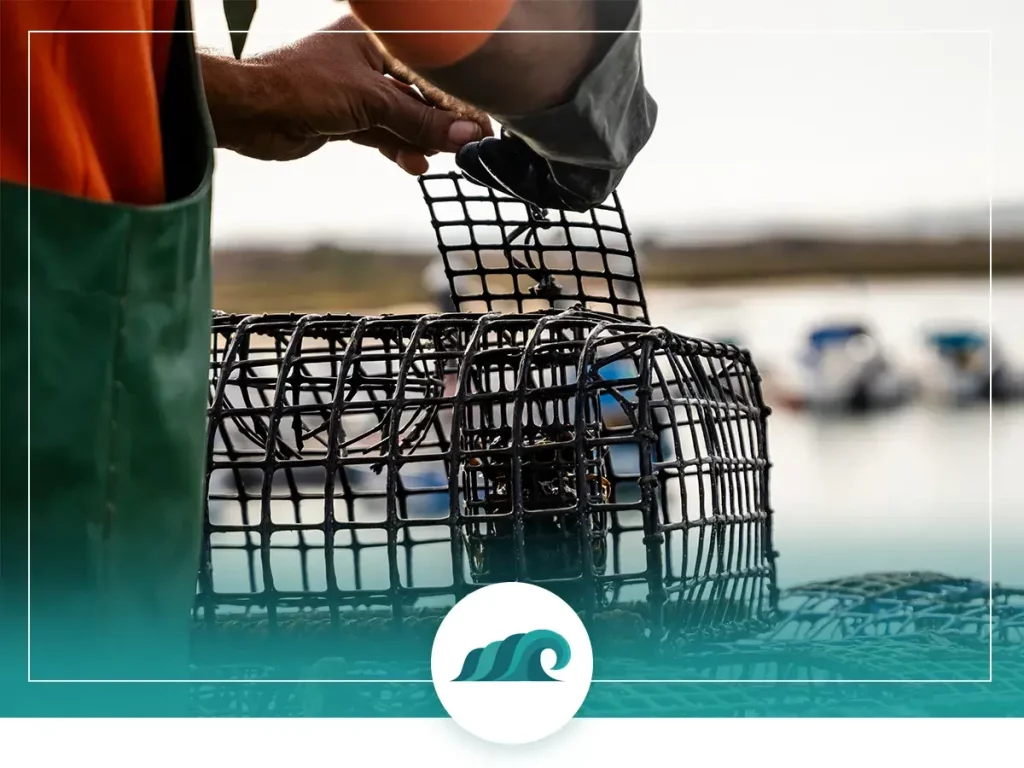
There are a wide variety of traps used in recreational crabbing – starting with cheap $20 netting ring traps up to sturdy $100 plus coated stainless steel pots. Ultimately, the best trap will be the one that enables you to catch the most crab, which isn’t always the most expensive one.
Ring Traps
Ring traps are the simplest and least expensive type of crab trap. They’re lightweight, collapsible and easy to deploy – which make them great for beginners or anyone with limited boat space.
These traps are made from two concentric rings with mesh netting connecting them. When the trap is deployed it lies completely flat on the sea floor allowing crabs to walk in and feed on the bait. When the trap is pulled up, the outer ring rises above the lower ring, and any crabs still inside the ring are trapped.
Because crab can easily walk in and out, it’s important to retrieve a ring trap quickly. You don’t want to leave the trap submerged in the water for more than 15 – 20 minutes – or else you’ll pull it up empty with your bait gone!
It’s also essential to pull the trap up rapidly without pausing. Ring traps aren’t enclosed on the top, so crabs can swim or climb out the top if you’re too slow. Many crabbers like to use a special four-point harness that keeps the trap even during retrieval.
Ring traps are an excellent option for kayak crabbing, or any time space is at a premium. Many crabbers also like to use them to survey an area for crab before dropping a larger pot.
Slip Ring Traps
Slip ring traps are constructed from two identical sized metal rings spaced 6 to 10 inches apart by the frame. When deployed, one ring rests on the sea floor, while the other ring is directly above it. Crabs are able to walk directly in and out of the trap from all directions to feed on the bait.
A third ring with netting attached to it rests on the sea floor. This is where the harness attaches to the trap. When pulled, this cylinder of netting pulls upwards and completely encloses any crab still inside the trap.
Slip rings work similar to traditional ring traps – with one major difference – they have an enclosed top. This means crab can’t escape the trap as you pull it through the water.
These traps are heavier and bulkier than ring traps but are better at keeping crab from climbing out. They also need to be checked often, as crab can climb in and out at any time.
Cage Traps (Pots)
Cage traps – often simply called ‘pots’ – are fully enclosed traps with one-way doors that allow crabs to climb in but not back out. They’re probably the most effective type of crab trap – but require a different technique than ring traps.
Because crabs can’t escape once they’ve entered the trap, you can leave a pot to soak in the ocean for hours at a time. Keep in mind that once the bait is gone, no more crabs will enter the trap. Many crabbers will drop their pots off in the morning, and then pull them up later in the evening.
There are a variety of pot designs – from small, collapsible wire traps used by recreational crabbers all the way to the 100-pound steel pots used by commercial crabbing boats.
When picking a cage trap look for one with multiple raised doors and ramps leading up to the doors. The more doors, the more crab will find their way into your trap. Raised doors with ramps mean that crab will be able to find their way into the trap – even if it’s dropped on an uneven seafloor.
Keep in mind that one-way doors aren’t foolproof. Crabs can sometimes get stuck in a door – jamming it open and allowing other crabs to escape. Also, if you don’t bait the trap properly, crabs will be able to crawl on the outside of the trap and steal your bait!
Other features to look for are one or more escape hatches for smaller crabs, and a rot-cord system to disable the trap if it gets lost. These are required by law in many areas, so make sure to check your local laws and regulations before heading out.
Best Overall: Promar TR-530 Heavy Duty Crab Pot
This large, well-made trap is ideal for catching Dungeness and Red Rock crab. It’s built like a tank and can easily withstand rough tidal conditions. If you’re looking for a crab trap that will last for years without needing to be replaced, then this is the trap for you.
It weighs in at a hefty 15 pounds, so you probably won’t need to add extra weights, plus you’ll get good workout pulling it up through the water!
There are three tunnel entrances with inclined ramps leading up to them, which helps more crab get inside the trap. Two round escape holes allow juvenile crabs to escape. A rot cord system is built in – which allows crabs to escape should the trap get lost. An internal bait box is also included – which makes baiting your trap much easier.
The frame is made from heavy-duty vinyl coated stainless steel. Unlike lighter traps, seals aren’t able to break in and steal your bait!
The only major drawback is that it’s not collapsible, so you’ll need to make sure you have enough room in your boat/vehicle. Also, if you’re on the east coast and going after Blue crab then you’ll need to modify the pot by adding smaller netting to the exterior.
Key Features
- Measurements: 30” x 10”
- Weight: 15 Lbs
- Durable and well-built – will last for decades
- Internal bait box comes included
- Available with or without rigging bundle
- Promar TR-530 heavy duty crab pot
- 30X10 blue steel
- Manufactured by Promar
- Sports product
Prices pulled from the Amazon Product Advertising API on:
Product prices and availability are accurate as of the date/time indicated and are subject to change. Any price and availability information displayed on [relevant Amazon Site(s), as applicable] at the time of purchase will apply to the purchase of this product.
View Price On
Best Collapsible/Folding Trap: Danielson Pacific FTC Crab Trap
This collapsible vinyl-coated steel trap is one of the most popular traps among west coast Dungeness and Red Rock crabbers. It’s collapsible and folds completely flat for easy transport.
Even though it’s collapsible, it’s not a flimsy trap by any means. The frame is made from heavy-gauge coated steel wire, and once assembled forms a sturdy box-shaped trap.
Four one-way swing doors allow crabs to enter the trap from any direction – but they can’t get back out once inside. If you fish in an area with strong tides or currents, attaching some 1 – 2-ounce fishing weights to the doors will ensure that they don’t swing back open in heavy current.
Two circular escape rings on the top of the trap allow juvenile crabs to escape, and a fall away rot-cord system disables the trap should it not be retrievable.
The only major drawback is that there’s no large opening at the top. In order to extract the crab, you have to collapse the trap. If you’re targeting blue crab you’ll need to modify the trap with some netting or wire to shrink the gaps.
Key Features
- Measurements: 24″ x 24″ x 13″
- Weight: 9 Lbs
- Collapses totally flat for easy transport
- Ideal for Dungeness and Red Rock crab
- Fairly lightweight – may need to add additional weights in strong current
- FISH ACCESSORIES: The Danielson 24 Fold-Up Crab Trap is an exclusive fishing accessory that is trusted widely by recreational crabbers throughout the Pacific Northwest. With this collapsible crab trap in your fishing kit, you can enjoy crabbing with utmost convenience. This is a non-compliant trap for the state of California
- QUALITY CONSTRUCTION: This foldable crab trap is manufactured of vinyl-coated steel wire, which is not just marine-grade but also utterly strong. This net can easily handle under water conditions and is not-at all bulky to save your extra storage space and carrying needs.
- EASY TO USE: This crabbing trap has four entrance doors and two escape rings, so you can easily catch small crabs. Featuring a fall-away rot-cord system, this crab trap is easy to disable in case you are not able to retrieve it.
- DIMENSIONS: This collapsible crab trap measures 24 in length, 24 in width, and 13 in height, making it an ultimate choice for recreational and professional crab enthusiasts. You can just fold this trap flat for easy storage and convenient transport.
- CALCUTTA OUTDOORS: A leading manufacturer of consumer products for the outdoor sports and recreation market providing performance-driven products, including fishing rods, tackle, coolers, drinkware, outdoor apparel, paddle sports, and marine accessories.
Prices pulled from the Amazon Product Advertising API on:
Product prices and availability are accurate as of the date/time indicated and are subject to change. Any price and availability information displayed on [relevant Amazon Site(s), as applicable] at the time of purchase will apply to the purchase of this product.
Best Ring Trap: Promar 32-Inch Lobster and Crab Net
If you’re looking for a versatile, well-made, ring style trap that’s built to last – this is the trap for you. The netting is made from heavy-duty polyethylene, so it can withstand the rigors of the saltwater environment.
A built-in bait pouch keeps your bait secure and allows for longer soak times. The net itself is huge – measuring 36” in diameter and 20” deep when engaged. This translates to more crab in your cooler!
Also included are a 100’ length of rope and 2 small bobbers to keep the rope suspended above the trap.
The design is extremely versatile and will allow you to catch a variety of species, including blue crab and lobster. Some fishermen even use it as a retrieval net for pier or bridge fishing.
One thing to keep in mind is that this type of netting is fairly light, so you may need to add some fishing weights if there is a strong current.
Key Features
- Measurements: 36” diameter, 20” deep when pulled
- Extremely well-made – will last many crabbing seasons
- Comes with built-in bait pouch, rope, and small bobbers
- Net is fairly lightweight – may need to add some weights
- Promar premium products are designed, built, and customized to provide an enhanced experience for the outdoor enthusiast.
- With over 60 years of manufacturing and product development experience, we currently manufacture more than 500 products under our brands
Prices pulled from the Amazon Product Advertising API on:
Product prices and availability are accurate as of the date/time indicated and are subject to change. Any price and availability information displayed on [relevant Amazon Site(s), as applicable] at the time of purchase will apply to the purchase of this product.
Best Slip Ring Trap: Protoco Slip Ring
This durable slip ring trap from top crabbing manufacturer Protoco is particularly well designed and will last for years of service. The rugged steel frame is coated in a durable blue polyethylene coating – giving it total protection from the saltwater environment.
In order to prevent corrosion, the wire used on the top and bottom of the trap is made of treated stainless steel, while the netting on the sides is treated with tar to increase its longevity. A polyethylene coated bait box is included as well, which helps to keep your bait from getting quickly devoured by crabs or other curious predators.
A major design feature is that it prevents any crab from escaping out the top during retrieval – a flaw common to most typical ring style traps.
Keep in mind that this trap is built for Dungeness and Red Rock crab. If you’re an east coaster looking to catch blue crab you’ll need to perform some modifications to the netting.
View on: [su_button url=”https://www.amazon.com/Protoco-SLIP-RING-MEDIUM-Medium/dp/B003F0PGGK/ref=as_li_ss_tl?ie=UTF8&linkCode=ll1&tag=coastalside-20&linkId=09665f3c9846a22260ee453be26e38fe&language=en_US” target=”blank” style=”flat” background=”#d93f2c” size=”8″ radius=”5″ text_shadow=”0px 0px 0px #000000″ class=”{ display:inline-block; }”]Amazon[/su_button]
Key Features
- Measurements: Available in 21” x 6”, 25” x 6” and 28” x 10” inch configurations
- Weight: 9 Lbs
- Slip ring style traps fish faster that cage traps – will need to be checked frequently
- Excellent workmanship – you can tell it was designed by a pro
- Bait box comes included
Budget Pick: Promar Steel Wire Crab Net
If you’re just looking to catch a few crabs and you’re not too worried about getting an heirloom quality showpiece, then this is the trap for you. The netting and rings are made from stainless steel wire, so they should last for a while. Be sure to give the trap a quick freshwater rinse after each use to prevent rust from developing.
The trap is surprisingly large, with the outer ring measuring 18” in diameter and the inner ring measuring 10”.
The included lines on the harness are a bit flimsy, so be sure to replace them with some braided polyester string or heavy fishing line if you plan to use the trap often. Also, because it’s made of wire, the trap is fairly light – attaching a few fishing weights to the base will help keep it settled on the seafloor.
Key Features
- Measurements: 18” outer ring diameter, 10″ inner ring
- Lightweight wire construction means you may need to add weights
- Excellent value
- Good for a variety of crab species (including blue crab)
- Promar Premium Products Are Designed, Built, And Customized To Provide An Enhanced Experience For The Outdoor Enthusiast.
- Item Package Dimensions: 1.5 L X 45.7 W X 45.7 H (Cm)
- Item Package Weight: 0.249 kgs
- Product Type: Fishing Equipment
Prices pulled from the Amazon Product Advertising API on:
Product prices and availability are accurate as of the date/time indicated and are subject to change. Any price and availability information displayed on [relevant Amazon Site(s), as applicable] at the time of purchase will apply to the purchase of this product.
How to pick the right crab trap
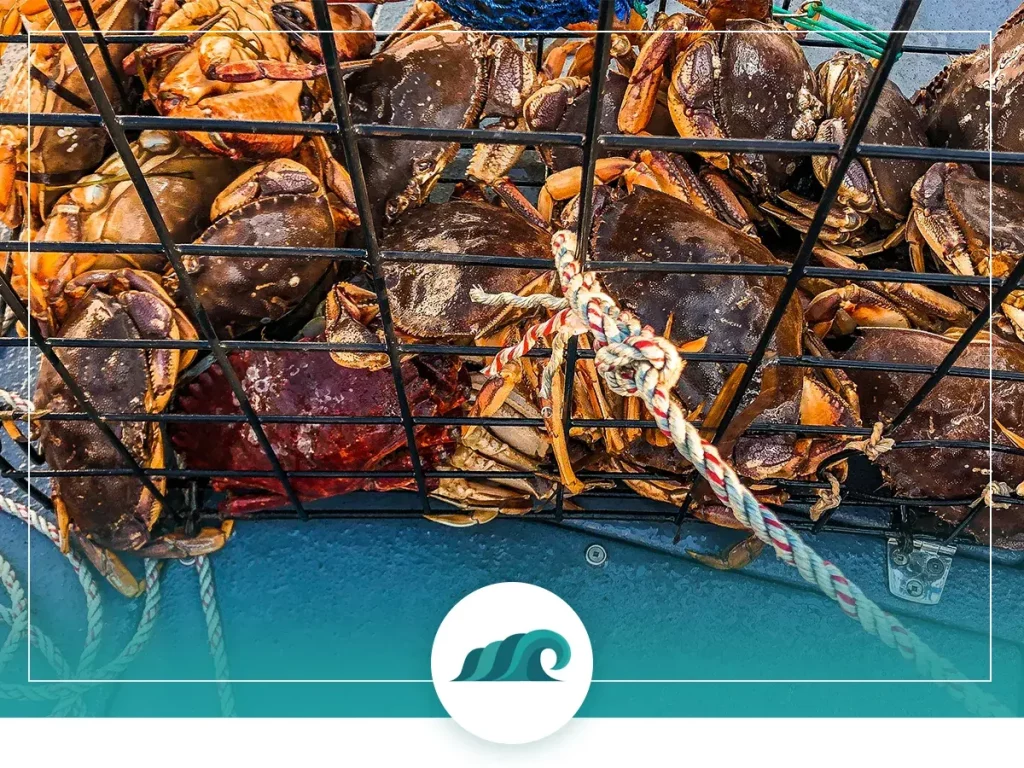
The best crab trap for you will depend on a number of factors including the crab species you’re targeting, tidal currents, available space, and your local laws and regulations.
Crab Species
There are three main crab species targeted by recreational crabbers in North America. Dungeness and Red Rock Crab are found along the west coast from Alaska down to Baja California. Blue Crab (also called Chesapeake blue crab or Blues) are native to the Atlantic Ocean and can be found along the east coast from Cape Cod down to the Gulf of Mexico.
Dungeness are significantly larger than either Red Rock or Blue crab – so most traps made for them will be larger, sturdier and have more spaced out wire/netting. If you’re going after blues you may need to modify your trap with extra wire so that the gaps between the wires are small enough to keep blue crab inside.
Tidal Currents
Depending on your local weather conditions, you may need to consider the effects of underwater currents on your crab trap. In areas with heavy currents and waves, lightweight ring traps may not be useable, as they can be carried away by the current and won’t lay flat on the ocean floor.
For lighter traps like the Danielson Pacific FTC Crab Trap, many folks like to lash steel rebar or other weights to the bottom of the pot to weigh it down properly. This will not only keep your trap in place but will help you catch more crab.
Durability
If you only go crabbing a couple of times a year, you probably don’t need the most high-end crab trap on the market. However, if you plan on using your trap often, I’d recommend going with a heavier coated stainless steel trap. They can withstand the wear and tear that inevitably occurs in the saltwater environment.
If you plan on catching crab often, keep in mind that traps will need to be replaced eventually. Saltwater corrosion, damage from curious predators like seals and sharks, and sharp rocks mean that lightweight pots will not last as long as their heavy-duty counterparts.
Space
Available space is an important consideration if you plan on crabbing from a kayak or small boat. If that sounds like you then take a look at collapsible traps. These will allow you easily store and transport a good number of traps – even on small watercraft.
Another important feature to look for is stackability. Being able to neatly stack your traps on top of one another is a major plus. This will allow you to load more traps onto your boat so you’ll have more room for you and your buddies!
Laws and Regulations
The last thing you want to do is run afoul of your local fish and game warden! This means being aware of local laws and regulations governing daily limits, size restrictions, licensing and fishing gear.
Many regions require traps to have a rot cord opening that will deteriorate and free any trapped crabs in the event that the pot is lost. They also must utilize a highly visible floating buoy, which alerts nearby boats to gear and lines in the water. Mounting a flag on the buoy will help to increase its visibility.
The requirements vary from place to place so be sure to acclimate yourself with your local laws.
Other Supplies Needed
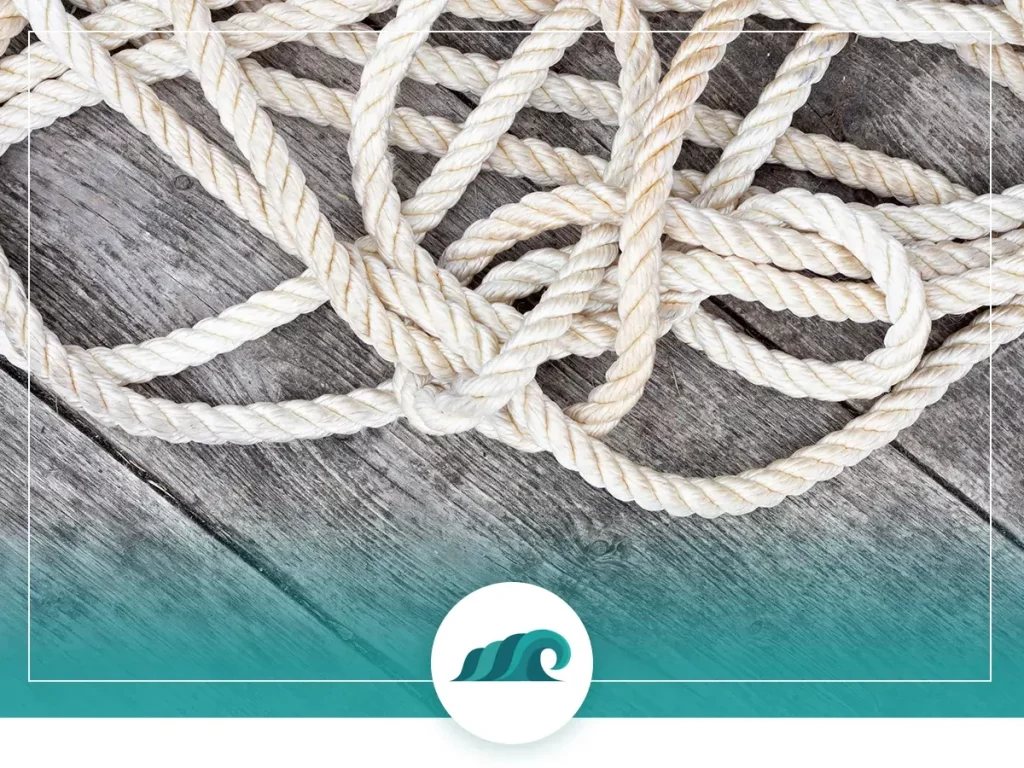
If you’re just getting started with crabbing, there are a few extra pieces of gear that will make your traps much more effective at catching crab. Many traps will come bundled with one or more of these accessories, or you may need to pick them up separately.
Harness
A harness clips to the outside of your trap and acts to keep it level as you retrieve it. They’re particularly important to use with ring traps as these can tip over and release any crabs inside if they’re not kept level during retrieval.
Look for a harness with at least 4 attachment points. The more attachment points the more secure your trap will be. If you have heavy pots, go with metal clips rather than plastic ones. An excellent overall choice is the Promar 4 Arm Trap Harness.
Rope
You’ll need a good length of rope to tether your trap to the float. Pretty much any type of durable rope will work fine.
Many crab fishermen like to use a sinking lead-core rope. This ensures that the line sinks and the trap stays put on the seafloor.
Sinking line also means that any excess line stays below the surface rather than floating on top. This helps ensure your line won’t get caught up in a boat’s propeller. The KUFA Sports 5/16″ Lead Core Line makes a great crabbing rope option.
Bait Bag/Box
A good bait box or bag is probably the most important modification you can make to your trap to increase its effectiveness.
Rather than tying your bait directly to the bottom of the cage, a bait box or bag allows you to stuff the bait inside an enclosed container and suspend it in the middle of the trap. This has a number of benefits:
- Bait inside a bait box is harder for the crabs to actually eat. They’re attracted by the smell, but can only nibble on it a little bit at a time – they can’t consume it all at once. This means your traps will remain active for a longer period of time.
- It’s harder for crabs to steal your bait. If you lash your bait directly to your trap, crabs can sometimes climb around and eat it from the outside.
- If you’re working with smaller bait like fish guts or heads then stuffing them in a bait box is easier than trying to lash directly to the pot.
- Prevents predators from poaching your bait.
The Danielson Bait Cage is an excellent option for a compact bait box.
Buoy
A highly visible buoy ensures your trap can be seen by nearby boaters and other crabbers. Go with a bright color that’s easy to spot on the surface like bright red or orange.
Don’t be one of those cheapskates who uses an old plastic milk jug as a buoy! These will deteriorate in the saltwater are difficult to see on the surface.
An excellent buoy for crabbing is the Deep Water Float. These aren’t only for catching crabs – they make great boat moorage buoys and DIY kayak outriggers.
Additional Supplies
You probably already have most of these items lying around the house, but in case you don’t make sure to pick them up:
- Storage Container: You’ll need some type of watertight container with a lid. This is to store your crabs in after you’ve pulled them out of the water. A large igloo style cooler works well.
- Wire: You’ll need some wire to lash your bait box or bag to your pot. Wire also comes in handy for securing the frames of collapsible-style traps.
- Caliper: A caliper is a small plastic measuring device. They’re useful for quickly checking if a crab meets the size requirements for your local area. Some even have the state requirements printed on the side of the ruler.
- Weights: Depending on the type of trap you’re using and your local conditions, you may want to add additional weight to your trap to help it stay put on the sea floor. Some crabbers will put a brick inside the cage, while others like to lash rebar or lead fishing weights to the bottom of the trap.
- Bushel Basket: If you’re catching Blue Crab, many States have their catch limits stated in number of bushels per person (usually one). A bushel basket will allow you to accurately measure your catch and ensure you’re not over the limit.
Maintaining your Crab Traps
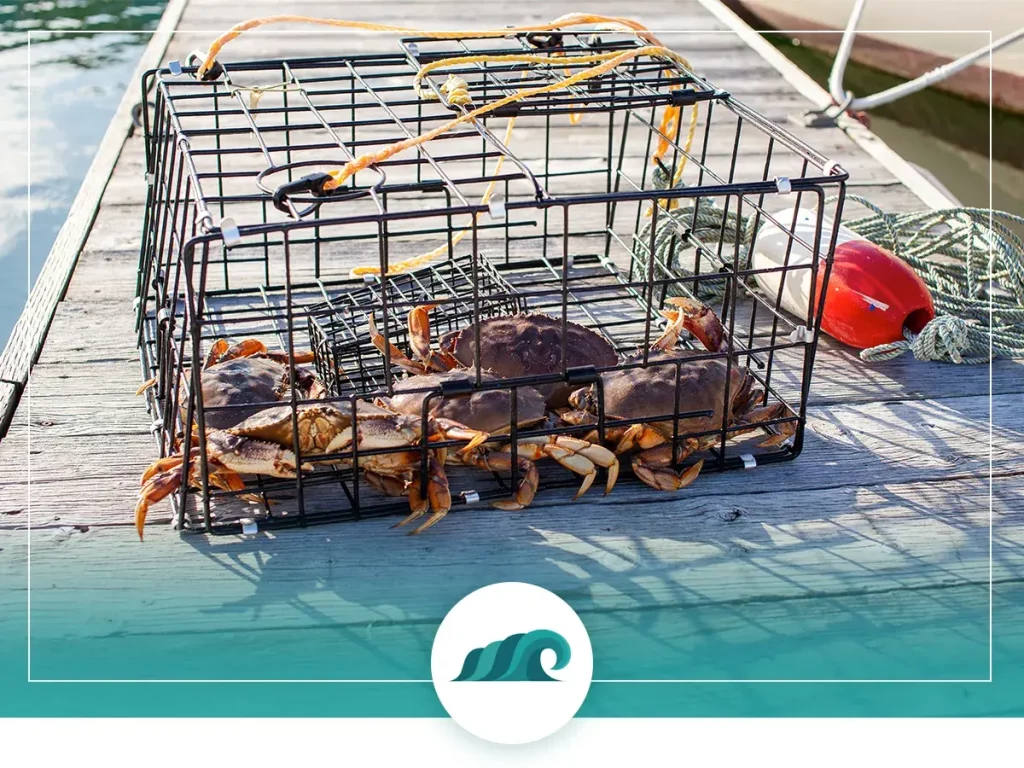
Crab traps are generally pretty low maintenance. A well-made trap should last years with minimal upkeep.
Maintaining your trap is fairly straightforward. As with anything that spends time in saltwater, make sure to give the trap a quick freshwater rinse before putting away in storage.
Before putting your traps away, it’s a good idea to visually inspect the outside of the cage or netting. Look for any corrosion, rust damage or tears. If you find some minor damage you can usually repair it yourself with some wire or netting.
Keep in mind that with enough wear and tear your traps will eventually get damaged beyond repair and need to be replaced.

